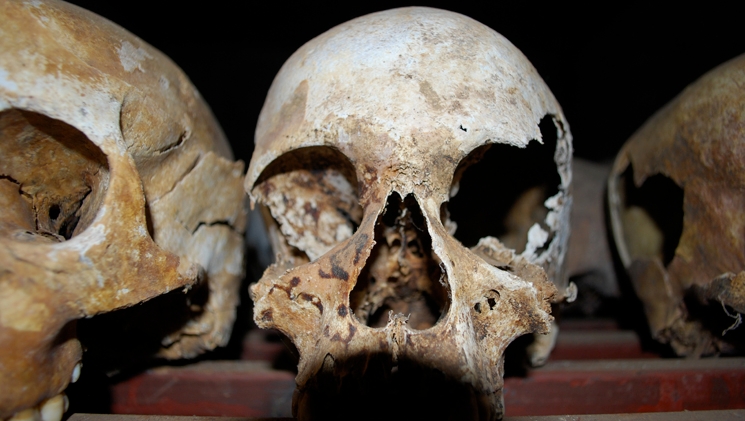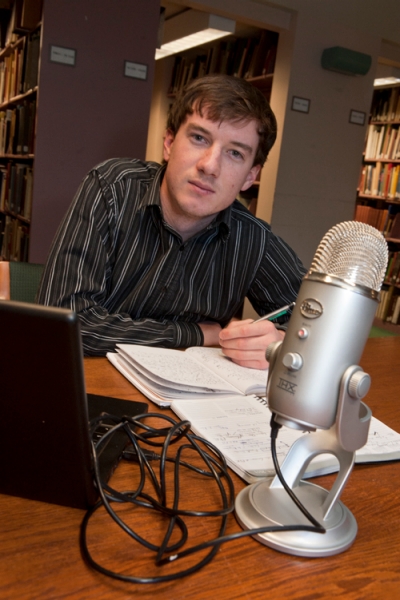
By
Confronting a paradox often gives one pause for thought, but in the case of senior Seth Woody the experience did more: It changed the course of his life at, and beyond, Boston College.
The summer after his freshman year at BC, Woody and his family went to Rwanda with his father, an Episcopal priest, to meet missionaries and others working to help the country continue recovering from the genocide of 1994 that resulted in an estimated 800,000 deaths.
Although Woody knew — or thought he did — about the genocide, witnessing its impact even more than 15 years later was at times overwhelming. But despite the pall, many people Woody encountered expressed hope for Rwanda’s future.
“I hadn’t expected to find this contradiction,” recalls Woody, a San Antonio native. “As a Christian, I was familiar with the idea that there is hope in suffering, but in Rwanda it just seemed unfathomable. When we came back, all I could think was, ‘How do I resolve this dilemma of hope and despair I saw?’”
The visit to Rwanda compelled Woody to make some important decisions. One was to change his major, from political science to theology. The other was to seek a way back to Rwanda and try to find out how such optimism about the human condition could flower in this unlikely setting.
Woody will share the discoveries and impressions from his quest via a weeklong exhibition that opens tomorrow in the Bapst Library Student Art Gallery. The exhibition includes photos taken by Woody and audio excerpts of interviews he conducted during his return to Rwanda last summer with people involved in reconciliation and social justice efforts.
Don’t go expecting tidy, concise solutions, says Woody, who funded his trip through an Advanced Study Grant from BC — along with donations from his home parish — and discussed the project at the Undergraduate Research Symposium in February.
“I didn’t answer my questions,” he explains, “but the experience gave me a space to take them to heart, and to wrestle with these issues. I see this exhibition as a metaphorical wall to bounce off our own ideas, experiences and beliefs about hope and despair. It’s important for this to be interactive, because I think few of us at BC have opportunities to explore these questions.”

To even begin to grasp the enormity of what took place in Rwanda, Woody says, you have to see for yourself — by visiting the various genocide memorial sites, for example. “In one church, there’s a statue of the Virgin Mary praying, over pews upon pews of victims’ clothes — still blood-stained, left just the way they were. It has a crypt lined with skulls, with machete wounds quite evident; you can almost see the people’s faces. At another site, a mass grave had been exhumed, and because the bodies had been buried in lime much of their character was preserved.
“These are very direct experiences that force you to think about the genocide in very human terms, instead of in numbers.”
But Woody found contrasts to these grim reminders in conversations with people like Christophe, who joined the Rwandan army to seek revenge for the murders of his father, two brothers and other family members by Hutu militia. “In the end, he realized that the perpetrators were in more pain than he was. He understood that the loss of their humanity, and their isolation from people and from God, was unbearable. Inspired by his faith, he started working with youths who have been orphaned or displaced, whether from the genocide, AIDS or other causes.”
A journalist named Danny, whom Woody describes as “very in touch with the Rwandan psyche,” pointed out to him various examples of how Rwandan life had gradually started returning to normal. “He acknowledged the problems, but he was proud of how the recovery was going.”
And then there is the Prison Fellowship, through which recently paroled prisoners — jailed for their actions in the genocide — help rebuild villages they had a part in destroying. “It’s almost impossible to believe people can take those steps, but they have. I know there is still doubt, fear and anger, yet the progress is unmistakable and very remarkable.”
Woody hopes that those who come to his exhibition will look at the photos, listen to the audio excerpts, and feel empowered to contemplate questions that have challenged him for nearly two years. A response book will be available for viewers to share their reactions and other thoughts.
“I’m so thankful for having had this opportunity, through the Advanced Study Grant program,” says Woody, who following graduation plans to spend a year “of simple living and discernment” in a local Episcopal monastery. “It’s important for undergraduates to seize these opportunities — maybe get their hands dirty in the process, but not to shy away from the tough questions and what they can teach us.”
The Bapst Library Student Art Gallery is open daily from 10 a.m. - 6 p.m. Click here to view a video interview with Sean Woody.



